《A METHODOLOGY OF INTERNATIONAL LAW》
| 作者 | 编者 |
|---|---|
| 出版 | NORTH-HOLLAND |
| 参考页数 | 357 |
| 出版时间 | 1984(求助前请核对) 目录预览 |
| ISBN号 | 044484847X — 求助条款 |
| PDF编号 | 812893518(仅供预览,未存储实际文件) |
| 求助格式 | 扫描PDF(若分多册发行,每次仅能受理1册) |
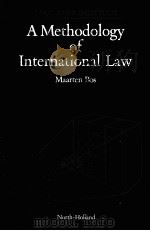
Chapter Ⅰ:Object and Purpose of a Methodology of International Law1
1.Introduction1
2.The Legal Universe:Perimeter and Core3
3.Method and Law9
3.1 Method lato sensu11
3.2 Law in force14
4.The Legal Process:The Coming into Being of Law15
4.1 Phase I15
4.1.1 The"legislative"process15
4.1.2 Principles of rational organization17
4.1.3 Factual elements17
4.1.4 Moral elements21
4.1.5 Procedure21
4.1.6 Role of the normative concept of law22
4.2 Phase II22
4.3 Phase III23
4.3.1 Half-products,finished products23
4.3.2 The principles of application:good faith and equity24
4.3.3 Four operations25
4.3.4 Procedure and evidence26
4.3.5 Enforcement26
4.3.6 Role of the normative concept of law27
5.A Definition of Law27
6.Analytical Conceptualism28
7.Natural Law and Positivism33
Chapter Ⅱ:Principles of Rational Organization as Applied in the Process of Law36
Chapter Ⅲ:The Recognized Manifestations of International Law48
1.General Questions48
1.1 Introduction48
1.2 The meaning of"sources"48
1.3 Two approaches to the question of"sources"49
1.4 "Sources"and the normative concept of law51
1.5 Inadequacy of the term"source"52
1.6 Article 38,paragraph 1,of the Statute of the International Court of Justice55
2.The Recognized Manifestations of International Law Individually Examined56
2.1 Introduction56
2.2 Treaty57
2.3 Certain decisions of international organizations61
2.4 Custom62
2.5 General principles of law68
2.6 Certain judicial decisions75
3.Some Alleged Manifestations of International Law80
3.1 Introduction80
3.2 Doctrine80
3.3 The work of the International Law Commission82
3.4 Resolutions of the United Nations General Assembly84
3.5 Unilateral acts88
4.The Relations between the Recognized Manifestations of International Law89
4.1 Introduction89
4.2 Mutual independence90
4.3 Coherence92
4.4 Relative place in a scale from induction to deduction92
Chapter Ⅳ:The Hierarchy among the Recognized Manifestations of International Law94
Chapter Ⅴ:Theory and Practice of Treaty Interpretation105
1.Introduction105
2.What is Interpretation?106
2.1 Limitation to written manifestations106
2.2 Interpretation and application110
2.3 Definition of interpretation113
3.Origin and Character of Methods and Rules of Interpretation115
3.1 Historical origin115
3.2 Methodological origin116
3.3 Character120
4.Miscellaneous Questions123
4.1 The identity of the law-applying agent123
4.2 The freedom of interpretation127
4.3 The eventual choice made by the interpreter130
4.4 The use of codification in matters of interpretation135
5.The Interpretation of Treaties137
5.1 Introduction137
5.2 Methods and rules of treaty interpretation138
5.2.1 Methods139
5.2.2 Rules145
5.2.3 Methods and rules evaluated149
(1)Party-intention and other factors149
(2)Interpretation ex tunc155
(3)No revision156
(4)Minimum of obligations156
(5)Interpretation contra proferentem157
5.3 Interpretation and the character of a treaty158
5.3.1 A comparison with national legal orders158
5.3.2 The private as against the public law approach:constitutional documents of international organizations159
5.3.3 Bilateral and multilateral treaties165
5.3.4 Law-making treaties,military treaties,treaties creating an objective situation,treaties carrying a limitation of sovereignty165
5.3.5 Agreements through consensus"UN-style"171
Chapter Ⅵ:The Interpretation of Decisions of International Organizations173
1.Two Species of Binding Decisions173
2.Some Practice and Doctrine176
3.A Comparison with the Interpretation of Treaties183
Chapter Ⅶ:The Interpretation of International Judicial Decisions185
1.Introduction185
2.Res Iudicata and Precedent186
2.1 Res iudicata186
2.2 Precedent187
3.The Interpretation of International Res Iudicatae193
4.The Interpretation of International Precedents213
Chapter Ⅷ:The Identification of Custom in International Law218
1.Introduction218
2.Factual Substance of,and Factors of Difference between,the Recognized Manifestations of International Law219
2.1 Factual analysis of the recognized manifestations of international law220
2.2 Factors of difference among the recognized manifestations of international law221
2.3 A comparison of the recognized manifestations of international law221
3.Voluntas and Opinio221
3.1 The limited scope of voluntas221
3.2 Opinio iuris222
4.Custom and Evidence224
4.1 Theories of custom and their impact on the question of ascertainment of the content of custom224
4.2 Some observations on evidence in relation to custom225
4.2.1 Eggens'doctrine of evidence225
4.2.2 Its applicability to international law227
5.Proof of Practice229
5.1 The concept of practice229
5.2 Extension and duration of practice231
5.3 Qualifications of practice234
5.4 Ways and means of proving practice235
6.Proof of Opinio Iuris236
6.1 Practice(conduct)as proof of opinio iuris237
6.2 Other means of proof241
6.3 Counter-evidence242
7.Estoppel;Ius Cogens244
8.Effect of Proof of Custom Ratione Personae247
9.Extension of Custom through Analogy?255
Chapter Ⅸ:The Identification of a General Principle of Law Recognized by Civilized Nations259
1.Introduction259
2.Conditions of Eligibility262
3.The Modus Quo of Identification265
(1)The choice of method266
(2)The ascertainment proper of the existence and content of a general principle of law270
(3)The decision regarding the reception of a general principle of law into international law271
4.Principles Proposed for Reception273
4.1 General concepts275
4.2 Law of obligations276
4.3 Law of property278
4.4 Procedural law279
4.5 Evidence282
4.6 Criminal law283
5.Binding Force Erga Omnes283
Chapter Ⅹ:Intertemporal Questions in International Law286
1.Delimitation and Character286
2.Criteria for the Distinction of Legal Relationships289
3.Some Cases291
Annex:Resolution Adopted by the Institute of International Law at its Wiesbaden Session,August 6-15,1975(The Intertemporal Problem in Public International Law)296
Chapter ⅩⅠ:Lacunae in International Law298
1.Introduction298
2.The alleged"completeness"of the law298
3.What is a lacuna?300
4.May a court fill a lacuna?302
5.Must a court fill a lacuna?303
6.Conclusion307
Chapter ⅩⅡ:Procedure308
1.Introduction308
2.The Impact of Procedure on Substantive Law308
3.The Impact of Procedural Thought310
3.1 The proper nature of judicial proceedings311
3.2 Procedural requirements versus merits314
3.3 Attitudes of parties317
4.The Purpose of Judicial Proceedings317
5.The Position of the Court318
6.The Coming into Being of a Judicial Decision320
7.Character and Significance of the Judicial Decision323
Chapter ⅩⅢ:Evidence327
1.Role of the Normative Concept of Law327
2.Purpose and Definition of Evidence329
3.Origin and Character of the International Law of Evidence330
4.The Position of Parties and the Court with Regard to Evidence335
4.1 The parties335
4.2 The court337
Chapter ⅩⅣ:Enforcement and Review339
Epilogue345
Subject Index347
1984《A METHODOLOGY OF INTERNATIONAL LAW》由于是年代较久的资料都绝版了,几乎不可能购买到实物。如果大家为了学习确实需要,可向博主求助其电子版PDF文件(由 1984 NORTH-HOLLAND 出版的版本) 。对合法合规的求助,我会当即受理并将下载地址发送给你。
高度相关资料
-

- ANATOMY OF INTERNATIONAL LAW A STUDY OF THE ROLE OF INTERNATIONAL LAW IN THE CONTEMPORARY WORLD
- 1981 SWEET & MAXWELL
-
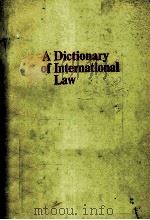
- A DICTIONARY OF INTERNATIONAL LAW
- 1982 PROGRESS PUBLISHERS
-
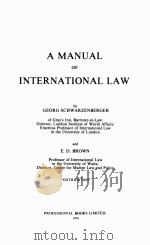
- A MANUAL OF INTERNATIONAL LAW
- 1976 PROFESSIONAL BOOKS LIMITED
-

- A BRITISH DIGEST OF INTERNATIONAL LAW VOLUME2B PARTII1
- 1967 STEVENS AND SONS
-

- Law of International Trade
- 1998 Sweet & Maxwell
-
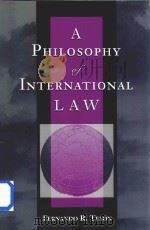
- A Philosophy of International Law
- 1998 Westview Press
-
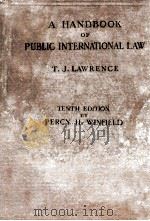
- A HANDBOOK OF PUBLIC INTERNATIONAL LAW TENTH EDITION
- 1927 MACMILLAN AND CO.
-
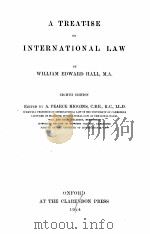
- A TREATISE INTERNATIONAL LAW EIGHTH EDITION
- 1924 OXFORD AT THE CLARENDON PRESS
-
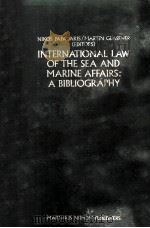
- INTERNATIONAL LAW OF THE SEA AND MARINE AFFAIRS: A BIBLIOGRAPHY SUPPLEMENT TO THE 1980 EDITION
- 1984 MARTINUS NIJHOFF PUBLISHERS
-
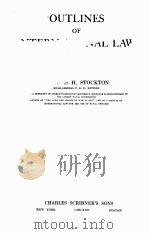
- OUTLINES OF INTERNATIONAL LAW
- 1914 CHARLES SCRIBNER'S SONS
-
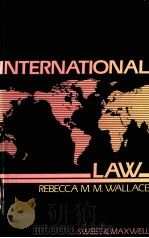
- INTERNATIONAL LAW A STUDENT INTRODUCTION
- 1986 LONDON SWEET & MAXWELL
-
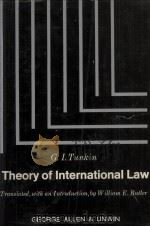
- THEORY OF INTERNATIONAL LAW
- 1974 LONDON·GEORGE ALLEN
-
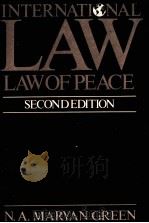
- INTERNATIONAL LAW LAW OF PEACE SECOND EDITION
- 1982 MACDONALD AND EVANS
提示:百度云已更名为百度网盘(百度盘),天翼云盘、微盘下载地址……暂未提供。➥ PDF文字可复制化或转WORD

